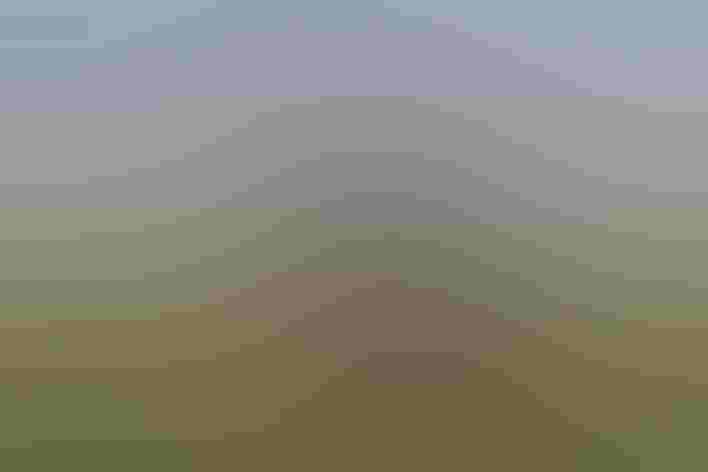Swainson’s Hawk
At a Glance
This slim and graceful hawk is a common sight over grasslands of the Great Plains and the west, but only in summer: every autumn, most individuals migrate to southern South America. Although Swainson's Hawk is big enough to prey on rodents, snakes, and birds (and does so, while it is raising young), at most seasons it feeds heavily on large insects instead. Flocks are often seen sitting on the ground in fields where there are many grasshoppers or caterpillars.
All bird guide text and rangemaps adapted from Lives of North American Birds by Kenn Kaufman© 1996, used by permission of Houghton Mifflin Harcourt Publishing Company. All rights reserved.
Category
Hawk-like Birds, Hawks and Eagles
Conservation
Low Concern
Habitat
Coasts and Shorelines, Desert and Arid Habitats, Fields, Meadows, and Grasslands, Shrublands, Savannas, and Thickets
Region
Alaska and The North, California, Florida, Great Lakes, Mid Atlantic, New England, Northwest, Plains, Rocky Mountains, Southeast, Southwest, Texas, Western Canada
Behavior
Direct Flight, Hovering, Soaring
Population
900.000
Range & Identification
Migration & Range Maps
Long-distance migrant, with most going to southern South America for winter. Often migrates in large flocks. May travel for several days without feeding. Mostly western, but every fall a handful of individuals show up on Atlantic Coast.
Description
18-22" (46-56 cm). W. 4' 1 (1.2 m). Slim, with small head and bill, long wings and tail. When soaring, wings are held above horizontal, and wingtips look rather pointed. Typical adult has bright white wing-linings contrasting with dark flight feathers; narrow brown chest-band between white throat and white belly. Also many variations: can be barred or rusty below, or mostly dark brown. Juveniles usually have heavy streaks at sides of chest, strong face pattern. Winter reports of Swainson's are usually based on Red-tailed or Rough-legged Hawks. Color patterns of all these buteos are variable; study flight silhouettes to clinch identifications.
Size
About the size of a Crow, About the size of a Mallard or Herring Gull
Color
Black, Brown, Red, Tan, White, Yellow
Wing Shape
Long, Pointed
Tail Shape
Rounded, Square-tipped
Songs and Calls
Long, plaintive, whistled kreee.
Call Pattern
Falling, Simple
Call Type
Scream
Habitat
Plains, dry grassland, farmland, ranch country. Breeds most commonly on northern Great Plains, in prairie regions with scattered groves of trees for nest sites. Less common in dry grassland farther west and in heavily farmed country. In migration, often pauses in fields where insect larvae may have been turned up by the plow.
Sign up for Audubon's newsletter to learn more about birds like the Swainson's Hawk
Behavior
Eggs
2-3, sometimes 1 or 4. Pale bluish white fading to dull white, usually lightly spotted with brown. Incubation is almost all by the female, about 34-35 days. Male brings food to female during incubation period.
Young
Both parents bring food for young, but at first female may remain with young much of time while male hunts. Young can fly about 42-44 days after hatching; may remain with parents until fall migration.
Feeding Behavior
May hunt by soaring over grassland, or by perching and scanning the ground. Skilled at catching flying insects in the air. When feeding on insects in fields, may catch them by running about on ground. May concentrate near grass fires, watching for prey driven into the open by the flames.
Diet
Mostly small mammals and reptiles in early summer, large insects at other seasons. When feeding young, preys on ground squirrels, pocket gophers, mice, snakes, lizards, small birds; sometimes bats or carrion. At other seasons, diet shifts to mostly large insects. May feed heavily on grasshoppers and caterpillars in late summer. In winter in Argentina, follows and feeds on swarms of nomadic dragonflies.
Nesting
In courtship, members of pair engage in display flights, with circling and steep dives. On prairies with scattered groves of trees, may have conflicts with Great Horned Owl where both species attempt to nest in same grove. Nest site is usually in a tree or large shrub in open country, usually 15-30' above ground, but may be lower or higher; generally well hidden within foliage. May be built on top of old magpie nest. Sometimes nests on ledge of cliff or steep slope. Nest is a platform of sticks, lined with finer twigs, weeds. Often adds leafy green branches to nest.
Climate Vulnerability
Conservation Status
Has declined seriously in much of its nesting range, especially in California. Causes of decline not well understood.
Climate Threats Facing the Swainson's Hawk
Choose a temperature scenario below to see which threats will affect this species as warming increases. The same climate change-driven threats that put birds at risk will affect other wildlife and people, too.


















